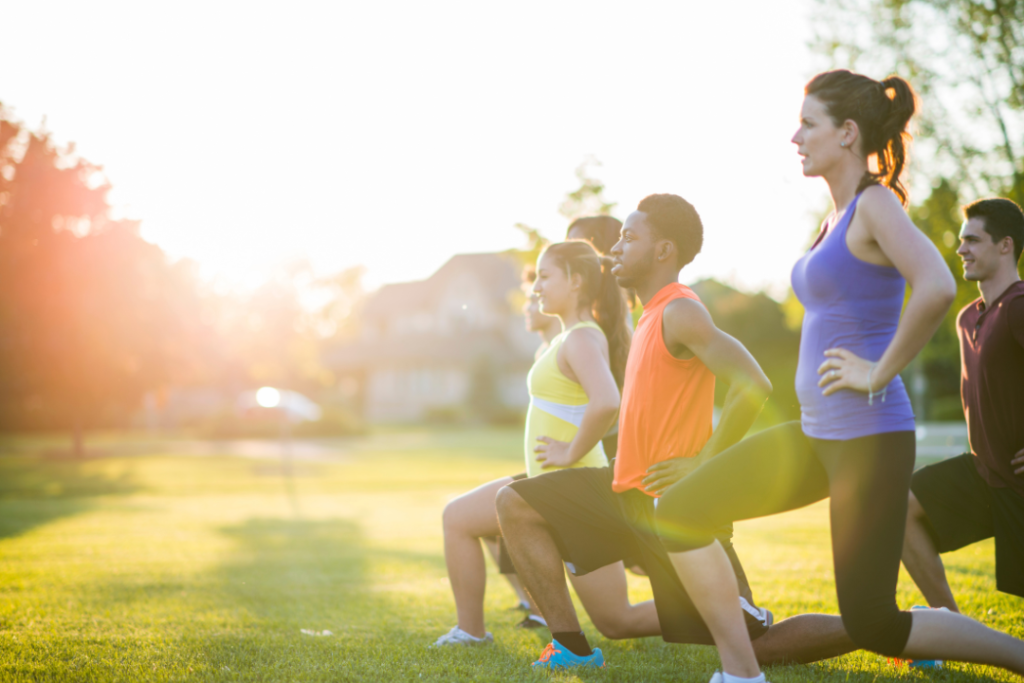In our fast-paced world, filled with demanding schedules and constant connectivity, it’s easy to overlook the importance of movement and exercise in maintaining our overall well-being. However, prioritizing regular physical activity is crucial for restoring balance and vitality. Incorporating training and exercise into our daily routines can unlock many benefits, from bodily health improvements to enhanced mental well-being. In this blog post, we will delve into the significance of movement and exercise in restoring and optimizing our health, focusing on how we can guide you to a healthier, more balanced lifestyle.
Understanding the Difference: Movement vs. Exercise
Prioritizing movement and exercise to maintain optimal health and well-being has become increasingly important in this modern era of convenience and sedentary lifestyles. While “movement” and “exercise” are often used interchangeably, it is crucial to recognize the distinction between them.
Movement refers to any form of physical activity that involves bodily motion. It encompasses the actions we perform in our daily lives, both consciously and unconsciously. Examples of movement include
- Walking or biking to work
- Doing household chores
- Playing with children or pets
- Dancing, and Even fidgeting in your seat.

These activities engage various muscle groups and contribute to calorie expenditure, albeit to varying degrees. Movement is a fundamental aspect of human life, essential for maintaining basic functionality and preventing sedentary behavior. It promotes circulation, joint mobility, and overall physical well-being. Incorporating movement into our routines helps counteract the adverse effects of prolonged sitting or a sedentary lifestyle.
On the other hand, exercise refers to planned and structured physical activities performed to improve physical fitness, strength, endurance, flexibility, or other aspects of health. Unlike everyday movements, exercise involves intentional effort and follows a prescribed regimen.
Exercise sessions are typically designed to target specific muscle groups or cardiovascular systems and are often performed at a particular duration and intensity. Common types of exercise include aerobic activities like jogging, cycling, or swimming, strength training exercises, flexibility exercises, and high-intensity interval training (HIIT) sessions.
Regular exercise offers numerous health benefits, such as improving cardiovascular health, increasing muscle strength and endurance, enhancing flexibility, and promoting weight management. It also positively impacts mental health, reducing stress and anxiety, improving mood, and boosting cognitive function.
The Power of Movement and Exercise

Regular movement and exercise are integral components of a healthy lifestyle. They offer numerous benefits, including:
Physical Health Enhancements
Physical activity helps strengthen muscles, enhance cardiovascular health, improve flexibility and balance, and increase overall endurance. Exercise can also promote weight management, reduce the risk of chronic diseases such as heart disease and diabetes, and improve immune function.
Mental Well-being
Exercise profoundly impacts mental health, playing a pivotal role in reducing stress, anxiety, and depression. Physical activity stimulates the release of endorphins, the brain’s natural mood-elevating chemicals, promoting happiness and well-being. Regular exercise also improves cognitive function, enhances focus, and boosts self-esteem.
Increased Energy and Vitality
Contrary to popular belief, movement and exercise boost energy levels rather than deplete them. Physical activity increases oxygen and nutrient supply to the muscles and organs, enhancing energy production and overall vitality.
Integrating Movement and Exercise into Daily Life
To reap the benefits of movement and exercise, making them a consistent part of your daily life is essential. Here are a few tips on integrating physical activity into your routine:
Find Activities You Enjoy
Engage in activities that you genuinely enjoy to increase adherence and motivation. Whether dancing, swimming, cycling, or playing a sport, discover what brings you joy and make it a regular part of your routine.
Start Small and Gradually Increase the Intensity
Begin with manageable amounts of exercise and gradually increase duration and intensity. This approach reduces the risk of injury and ensures a sustainable and enjoyable exercise regimen.
Incorporate Movement Throughout the Day
Look for opportunities to incorporate movement throughout your day. Take short walks during breaks, use the stairs instead of the elevator, or try standing and stretching every.
Prioritizing movement and exercise is critical to achieving optimal health. At the Restore Health and Lifestyle Center, we’re here to support you on this journey. Our team of professionals can provide personalized guidance to help you reach your goals. Visit our website to learn more and take the first step towards a healthier you. Embrace the power of movement and exercise today!

